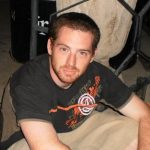
Computer engineer since 2012 at the University of Valladolid. In 2021 received his PhD at the University of Valladolid. He joined the Group of Atmospheric Optic from the Universidad de Valladolid (GOA-UVa) in 2009 with a PTA grant associated with technician works. He soon began securing consecutive contracts within the GOA-UVa, assuming increasing responsibilities and focusing on data-oriented tasks, which culminated in their first predoctoral contract. Following the completion of their doctoral research, they were awarded with two postdoctoral fellowships. In 2024, they achieved a position as a specialist technician in atmosphere and climate, affiliated with the Centro de Investigación de la Baja Atmósfera at the Universidad de Valladolid and associated with the GOA-UVa, where they continue to develop their professional career to this day. Since joining the group, they have consistently been involved in the research conducted by the GOA-UVa, contributing with their educational expertise to a group that initially lacked computer science specialists. Through this synergy between research and technical knowledge, they progressively developed research skills, ultimately completing their training period successfully. For their participation in the GRASP-ACE Marie Curie RISE project (in collaboration with GRASP-SAS), they hold the “Marie Curie Fellowship” distinction. Additionally, through involvement in projects funded by the Spanish Government, such as eEPOLAR and TRIPOLI, they have had the opportunity to participate in various research campaigns in both the Arctic and Antarctica.
Currently, he is responsible for the calibration infrastructure of GOA-UVa for NASA’s AERONET network, overseeing data quality and addressing the most critical technical aspects of the instrumentation that forms part of the network. To this end, he has participated in European projects such as ACTRIS (2011–2015), ACTRIS-2 (2015–2019), ACTRIS-PPP, ACTRIS-IMP, and ATMO-ACCESS. ACTRIS has been included in the ESFRI roadmap since April 2016.
Thanks to his background in computer science, he is involved in all phases of the projects that GOA-UVa carries out with ESA and EUMETSAT. These projects range from software development to data processing, analysis, and interpretation. Additionally, he contributes to the design and modeling of the tools developed for these purposes.
All this experience has led to their contribution to 37 scientific publications, which have been cited over 350 times, and to achieving an h-index of 13.
With 7 undergraduate theses supervised, 2 master’s theses, and 225 hours of teaching delivered since 2020 in the degree of Physics and the degree of Optics and Optometry, they hold 3 “trienios” and 1 “sexenio”.
